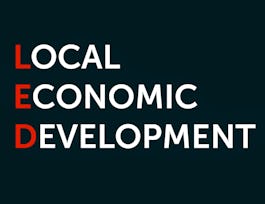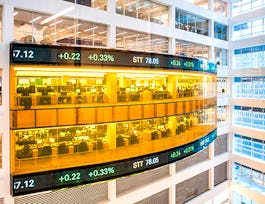This is the last of the three courses part of the Globalization, Economic Growth and Stability Specialization.¨Business Opportunities and Risks in a Globalized World¨ is the the 3rd and final course of the ¨Globalization, Economic Growth and Stability¨ Specialization taught by IE Business School's Professor Gayle Allard. This course is designed to help an investor, businessperson or economist approach macroeconomic, institutional and international data and derive information from the indicators that point to the types of opportunities and risks that they present. Students will gain practice by handling the data of some of the largest economies in the world –the United States, Japan, the European Union, China and India—and “reading the story” of their economies from their data, yielding surprisingly profound conclusions about their present and future. The course is the third in a series for the specialization but it is also a stand-alone course for anyone who wants practice in practical macroeconomics.



Business Opportunities and Risks in a Globalized Economy
This course is part of Globalization, Economic Growth and Stability Specialization

Instructor: Gayle Allard
Sponsored by Syrian Youth Assembly
10,921 already enrolled
(167 reviews)
What you'll learn
Master forex valuation, macroeconomic impact, and government influence on currency values.
Comprehend trade theories, identify trade "losers," and analyze effects on economies.
Explore global accounts, deficits, surpluses, migration's macro role, and challenges in globalization.
Details to know

Add to your LinkedIn profile
5 assignments
See how employees at top companies are mastering in-demand skills

Build your subject-matter expertise
- Learn new concepts from industry experts
- Gain a foundational understanding of a subject or tool
- Develop job-relevant skills with hands-on projects
- Earn a shareable career certificate


Earn a career certificate
Add this credential to your LinkedIn profile, resume, or CV
Share it on social media and in your performance review

There are 5 modules in this course
The US economy is not only the world´s largest, but also one of the most free-market developed economies; and its data is abundant and excellent. It provides an ideal opportunity for students to review the basic macroeconomic and policy variables and relationships, and to identify these or detect their absence in the real world. In the process, they can make the first steps toward determining how “normal” or especially good situations provide business opportunities and how departures from the rules point up situations that are risky for businesses operating in that country.
What's included
12 videos2 readings1 assignment
Japan, also one of the world´s giants, has followed a particular growth and development strategy which is reflected in its macroeconomic and international data. We will explore in this segment Japan´s data, in contrast to the United States, and find the unique policy challenges that this strategy presents for Japan, and the opportunities and risks that it implies for investors.
What's included
11 videos2 readings1 assignment
The EU is the world´s largest trading area and if it were a country, it would be one of the world´s largest. European nations opted for an intense project of economic integration in the postwar period which has incorporated 28 nations, but one of them, the UK, is in the process of leaving. We will discuss in this section how this type of integration conditions growth, crisis and recovery, and the mechanisms that countries with a single monetary policy and a single currency have (and do not have) to adjust their economies. What did we learn from the Eurozone crisis and the vote by so many UK citizens to leave Europe, and what are the implications for businesses operating in this region?
What's included
15 videos3 readings1 assignment
The final segment of the course turns toward the two emerging giants, India and China, and contemplates their past and future development strategies and thee risks and opportunities that they entail. Development itself is discussed, and how it occurs, and the strategies that nations may choose. The different components of GDP (C, I, G and X-M) are compared between India and China over a long period, to see what have been the different drivers for growth in the two countries over time. Special attention is paid in this section to institutional indicators, which are very different from developed countries, and the divergent demographic trends in the two countries; and the implications of those differences for the future.
What's included
10 videos2 readings1 assignment
What's included
4 videos1 reading1 assignment1 peer review
Instructor

Offered by
Why people choose Coursera for their career




Learner reviews
167 reviews
- 5 stars
86.82%
- 4 stars
8.98%
- 3 stars
2.39%
- 2 stars
0%
- 1 star
1.79%
Showing 3 of 167
Reviewed on Jun 7, 2020
The course is very good and the instructor has explained things nicely. Only the second specialisation of trade and immigration could have been more rigorous. A big thanks for the instructor.
Reviewed on Jul 26, 2024
If you want to get more Practical and more Real Data this For you
Reviewed on Oct 25, 2020
A very simple course with great practical applications! Just what we need!
Recommended if you're interested in Social Sciences

Erasmus University Rotterdam

The University of Melbourne

University of London

Sapienza University of Rome

Open new doors with Coursera Plus
Unlimited access to 10,000+ world-class courses, hands-on projects, and job-ready certificate programs - all included in your subscription
Advance your career with an online degree
Earn a degree from world-class universities - 100% online
Join over 3,400 global companies that choose Coursera for Business
Upskill your employees to excel in the digital economy


